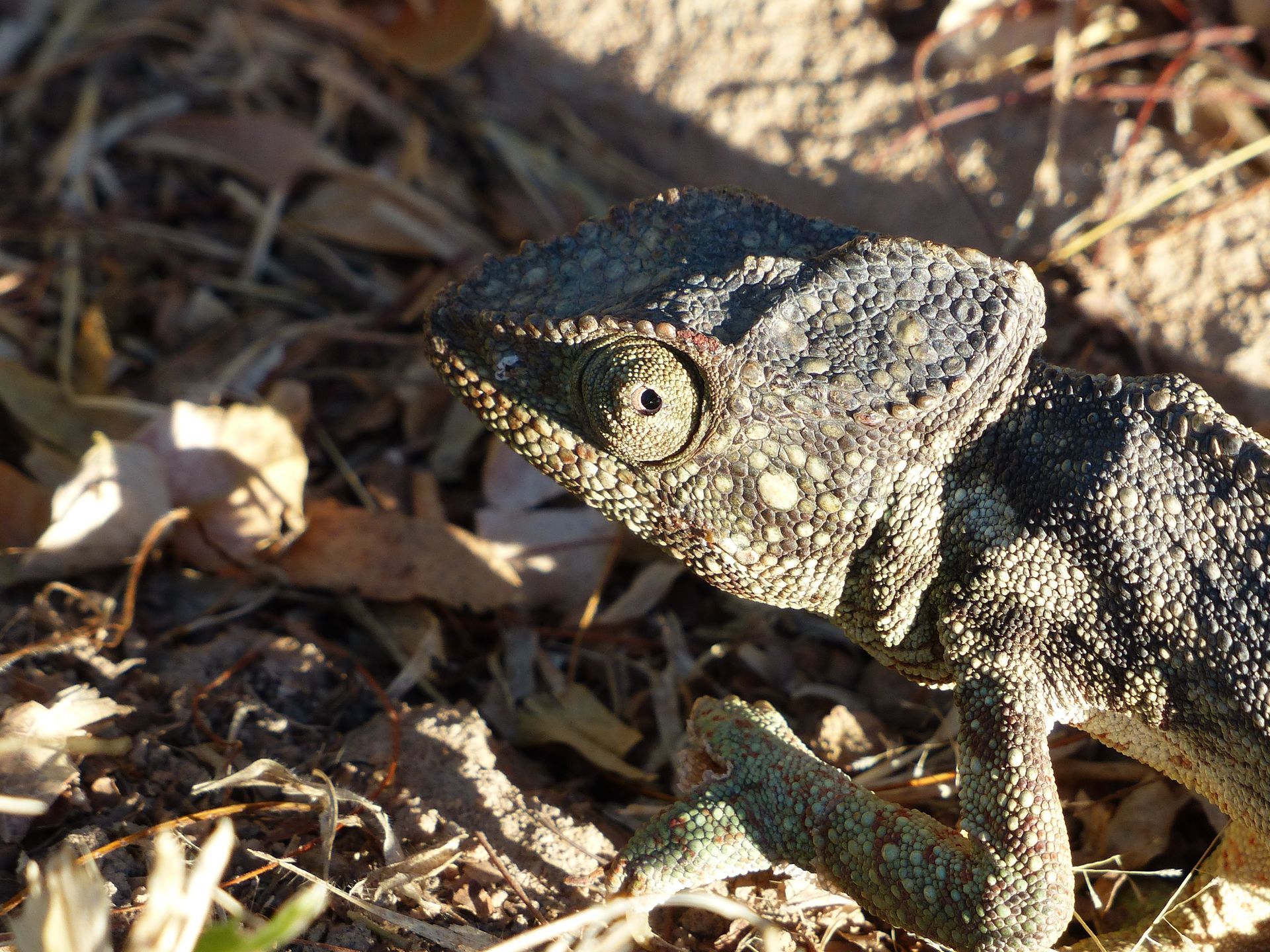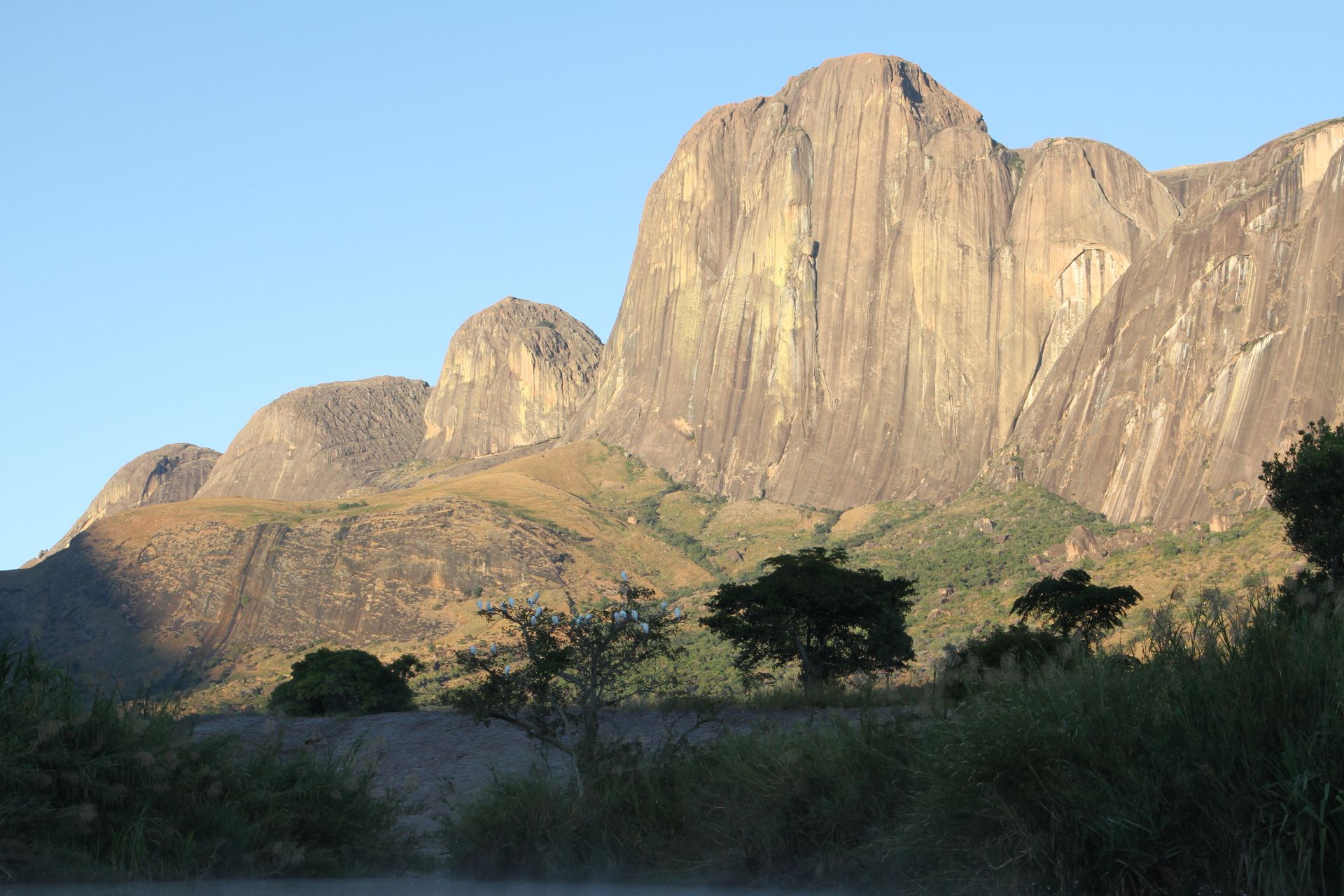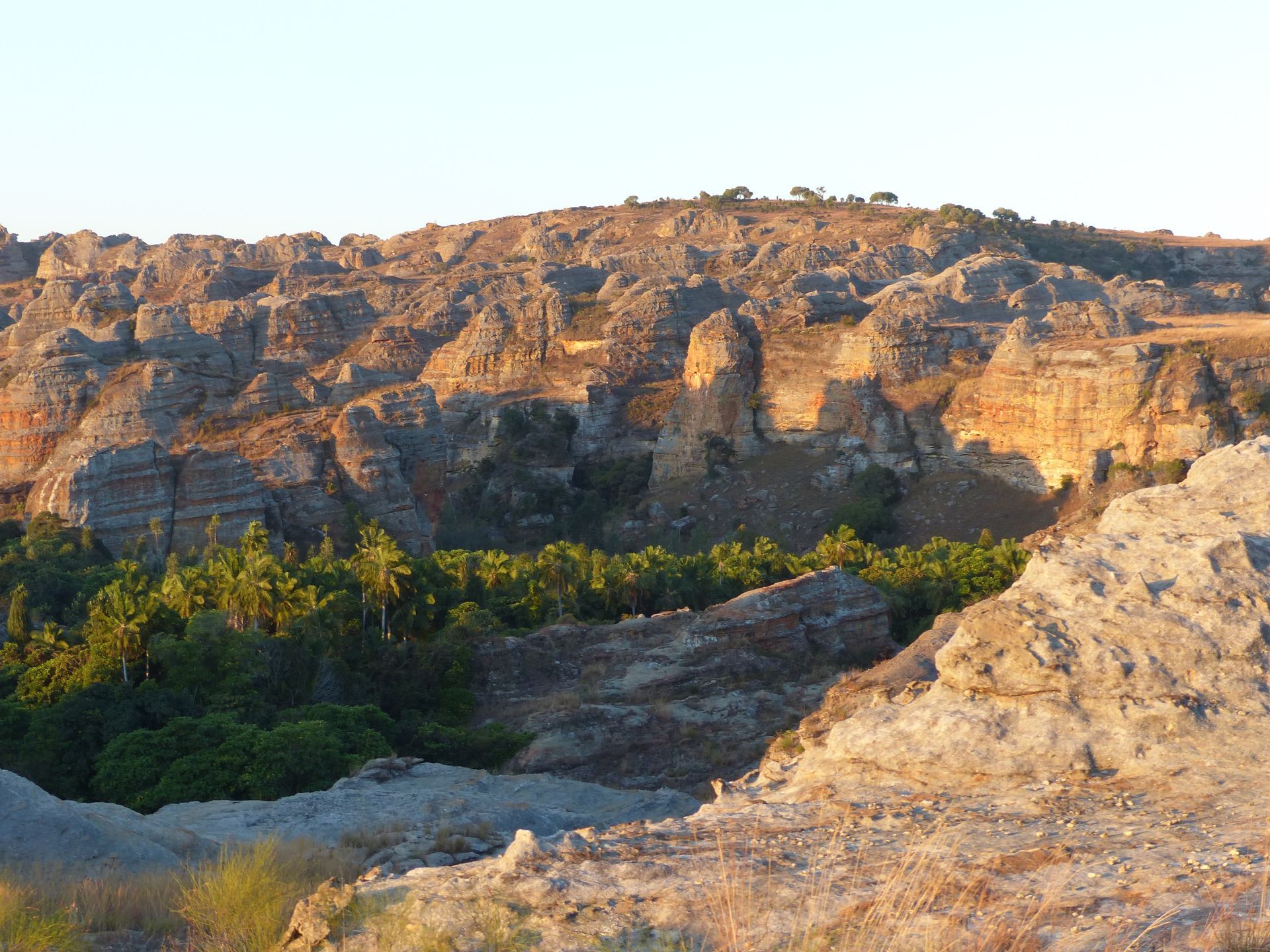MADAGASCAR
MADAGASCAR
MADAGASCAR
The fabled "Red Island" awaits...
The fabled "Red Island" awaits...
The fabled "Red Island" awaits...
It's big, it's old, it's out of this world and jam-packed with the most incredible experiences. Welcome to Madagascar... Put aside those images of King Julian, Alex the Lion and manic penguins and replace them with towering mountain peaks, lush, verdant valleys, vast arid deserts, dense primordial forests and endless white sand beaches.
Add to the mix some of the most unique and endangered species of fauna and flora on the planet and the irrepressible, incredible Malagasy people and you are getting close to the essence of what makes Madagascar such a "must see" African destination.
It's big, it's old, it's out of this world and jam-packed with the most incredible experiences. Welcome to Madagascar... Put aside those images of King Julian, Alex the Lion and manic penguins and replace them with towering mountain peaks, lush, verdant valleys, vast arid deserts, dense primordial forests and endless white sand beaches.
Add to the mix some of the most unique and endangered species of fauna and flora on the planet and the irrepressible, incredible Malagasy people and you are getting close to the essence of what makes Madagascar such a "must see" African destination.
It's big, it's old, it's out of this world and jam-packed with the most incredible experiences. Welcome to Madagascar... Put aside those images of King Julian, Alex the Lion and manic penguins and replace them with towering mountain peaks, lush, verdant valleys, vast arid deserts, dense primordial forests and endless white sand beaches.
Add to the mix some of the most unique and endangered species of fauna and flora on the planet and the irrepressible, incredible Malagasy people and you are getting close to the essence of what makes Madagascar such a "must see" African destination.



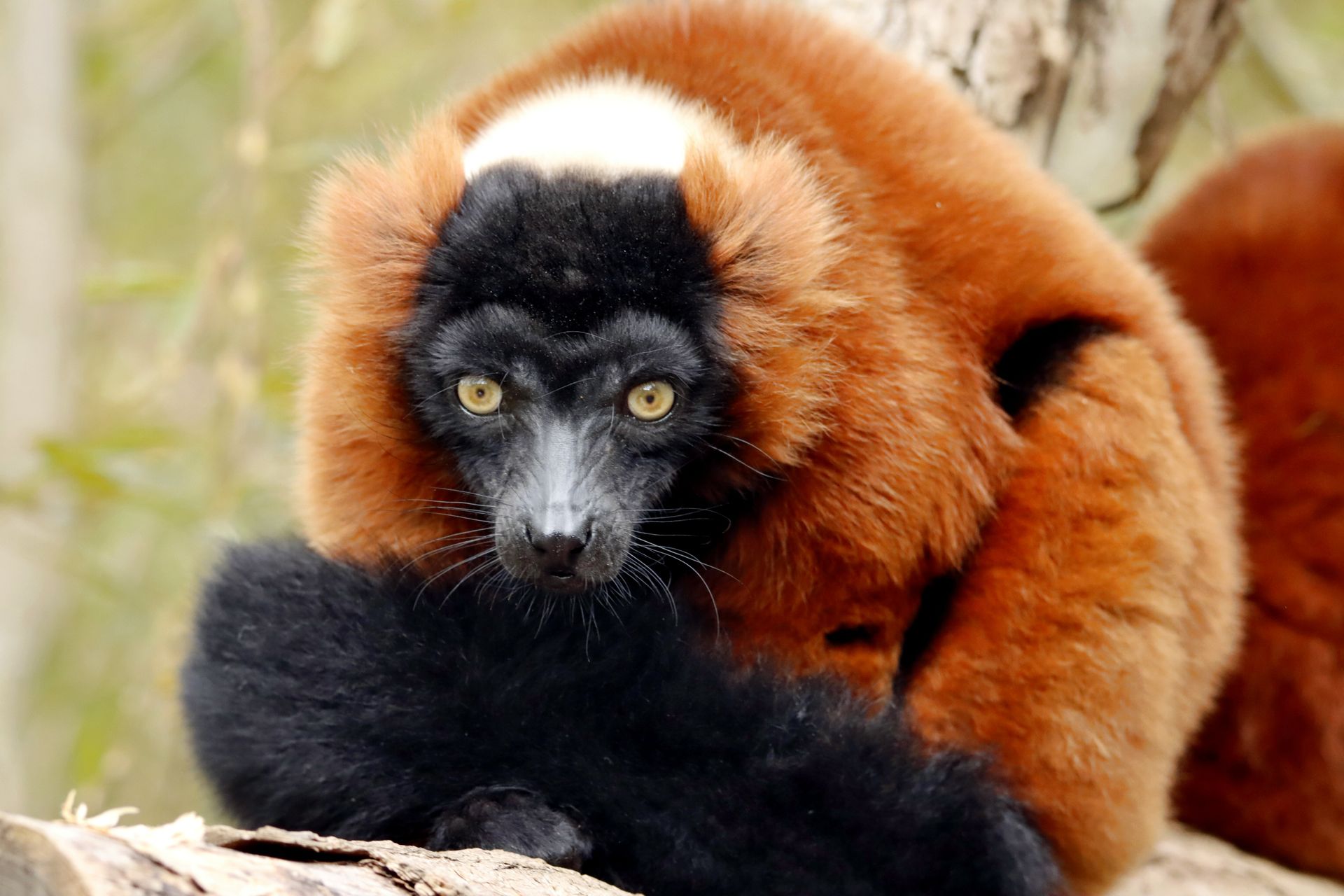
Slide title
Write your caption hereButton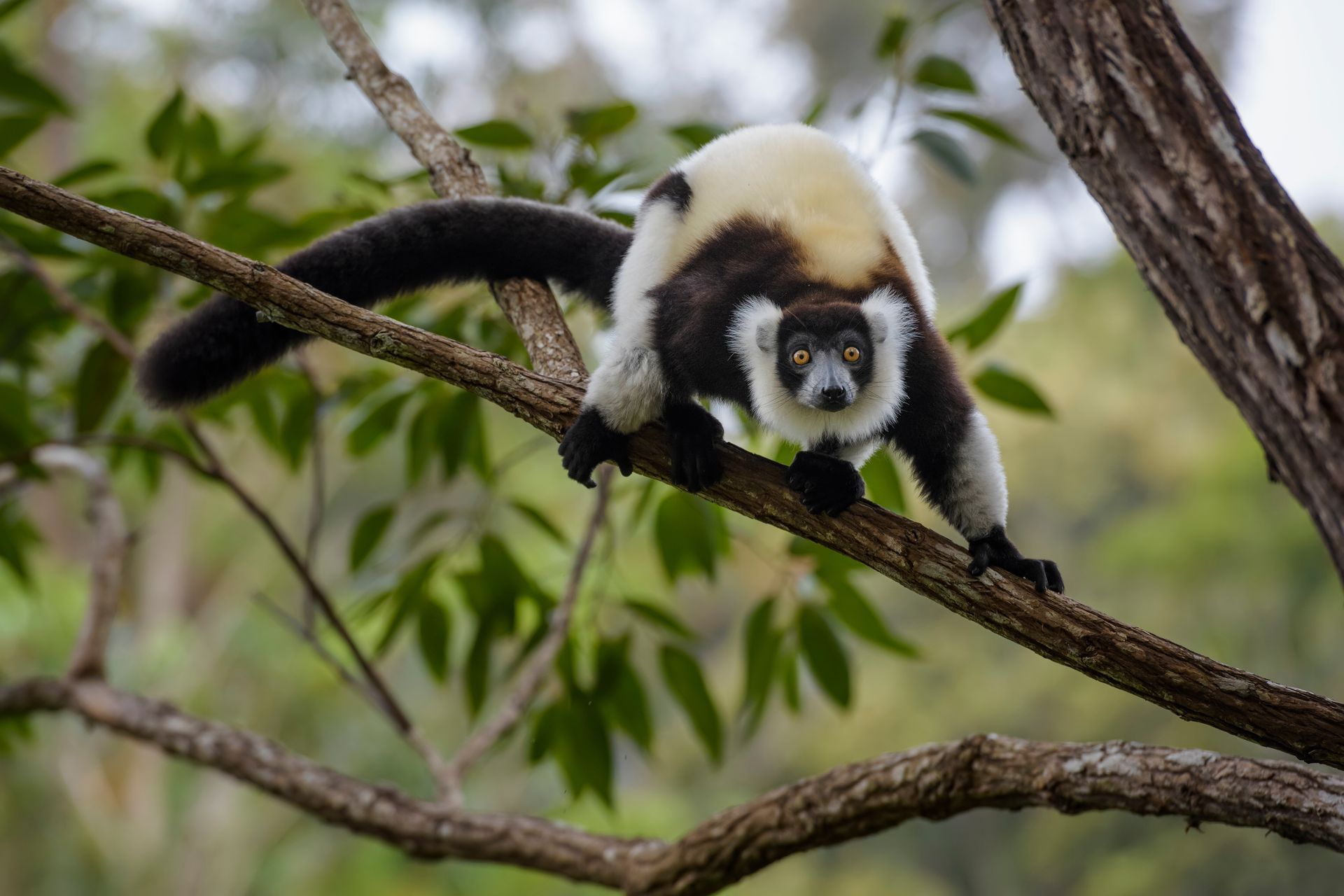
Slide title
Write your caption hereButtonSlide title
Write your caption hereButton
About Madagascar
Madagascar is divided north to south by a dramatic mountain range, which effectively splits the island into two. The northern coast is dotted with idyllic, sun-kissed islands with soft white sand beaches and some of the most beautiful coastal resorts in Africa.
On the east of the island's spine of mountains the climate is warm and moist, with ample rainfall giving rise to lush rainforests covering steep mountainsides all the way down to the coast. On the western side of the mountains it is much warmer and significantly drier. Here you will find desert-like landscapes and the famous baobabs and spiny forests.
In the middle lies the island's central highlands - wide valleys filled with rice paddies, punctuated by gurgling rivers and mountain streams, rolling hillsides and quaint villages where people farm the most delicious fresh produce you will ever taste!
Madagascar's marvellous wildlife and its incredible people make it one of the most sought-after destinations in Africa. It's every camera person's dream come true, providing a visual feast at seemingly every turn. From lemurs and chameleons to community celebrations and even every-day activities, life on the Red Island is colourful and captivating.
More than 80% of Madagascar's plants and animals are found nowhere else, making it one of the most fascinating places in the world from a wild fauna and flora point of view.
Here are some of the top destinations in Madagascar...

Slide title
Write your caption hereButton
Slide title
Write your caption hereButtonSlide title
Write your caption hereButton
About Madagascar
Madagascar is divided north to south by a dramatic mountain range, which effectively splits the island into two. The northern coast is dotted with idyllic, sun-kissed islands with soft white sand beaches and some of the most beautiful coastal resorts in Africa.
On the east of the island's spine of mountains the climate is warm and moist, with ample rainfall giving rise to lush rainforests covering steep mountainsides all the way down to the coast. On the western side of the mountains it is much warmer and significantly drier. Here you will find desert-like landscapes and the famous baobabs and spiny forests.
In the middle lies the island's central highlands - wide valleys filled with rice paddies, punctuated by gurgling rivers and mountain streams, rolling hillsides and quaint villages where people farm the most delicious fresh produce you will ever taste!
Madagascar's marvellous wildlife and its incredible people make it one of the most sought-after destinations in Africa. It's every camera person's dream come true, providing a visual feast at seemingly every turn. From lemurs and chameleons to community celebrations and even every-day activities, life on the Red Island is colourful and captivating.
More than 80% of Madagascar's plants and animals are found nowhere else, making it one of the most fascinating places in the world from a wild fauna and flora point of view.
Here are some of the top destinations in Madagascar...

Slide title
Write your caption hereButton
Slide title
Write your caption hereButtonSlide title
Write your caption hereButton
About Madagascar
Madagascar is divided north to south by a dramatic mountain range, which effectively splits the island into two. The northern coast is dotted with idyllic, sun-kissed islands with soft white sand beaches and some of the most beautiful coastal resorts in Africa.
On the east of the island's spine of mountains the climate is warm and moist, with ample rainfall giving rise to lush rainforests covering steep mountainsides all the way down to the coast. On the western side of the mountains it is much warmer and significantly drier. Here you will find desert-like landscapes and the famous baobabs and spiny forests.
In the middle lies the island's central highlands - wide valleys filled with rice paddies, punctuated by gurgling rivers and mountain streams, rolling hillsides and quaint villages where people farm the most delicious fresh produce you will ever taste!
Madagascar's marvellous wildlife and its incredible people make it one of the most sought-after destinations in Africa. It's every camera person's dream come true, providing a visual feast at seemingly every turn. From lemurs and chameleons to community celebrations and even every-day activities, life on the Red Island is colourful and captivating.
More than 80% of Madagascar's plants and animals are found nowhere else, making it one of the most fascinating places in the world from a wild fauna and flora point of view.
Here are some of the top destinations in Madagascar...
AVENUE OF THE BAOBABS
An iconic natural wonder located on a dirt road between Morondava and Belon'i Tsiribihina in western Madagascar, the Avenue of the Baobabs features a dramatic line of Grandidier's baobabs (Adansonia grandidieri) lining either side. These majestic trees, with their distinctively swollen trunks, are a treasured symbol of Madagascar.
The avenue is particularly captivating at sunrise and sunset, when the golden light creates a magical silhouette of the baobab trees against the colourful sky. It's an image that's become synonymous with Madagascar and that really resonates with the incredible natural vibrancy of this magical island nation.
Visitors have the choice to stroll or bike along the avenue, marvelling at the ancient trees as they go. Some of the trees are estimated to be more than 800 years old. Local vendors often set up stalls selling souvenirs and refreshments nearby.
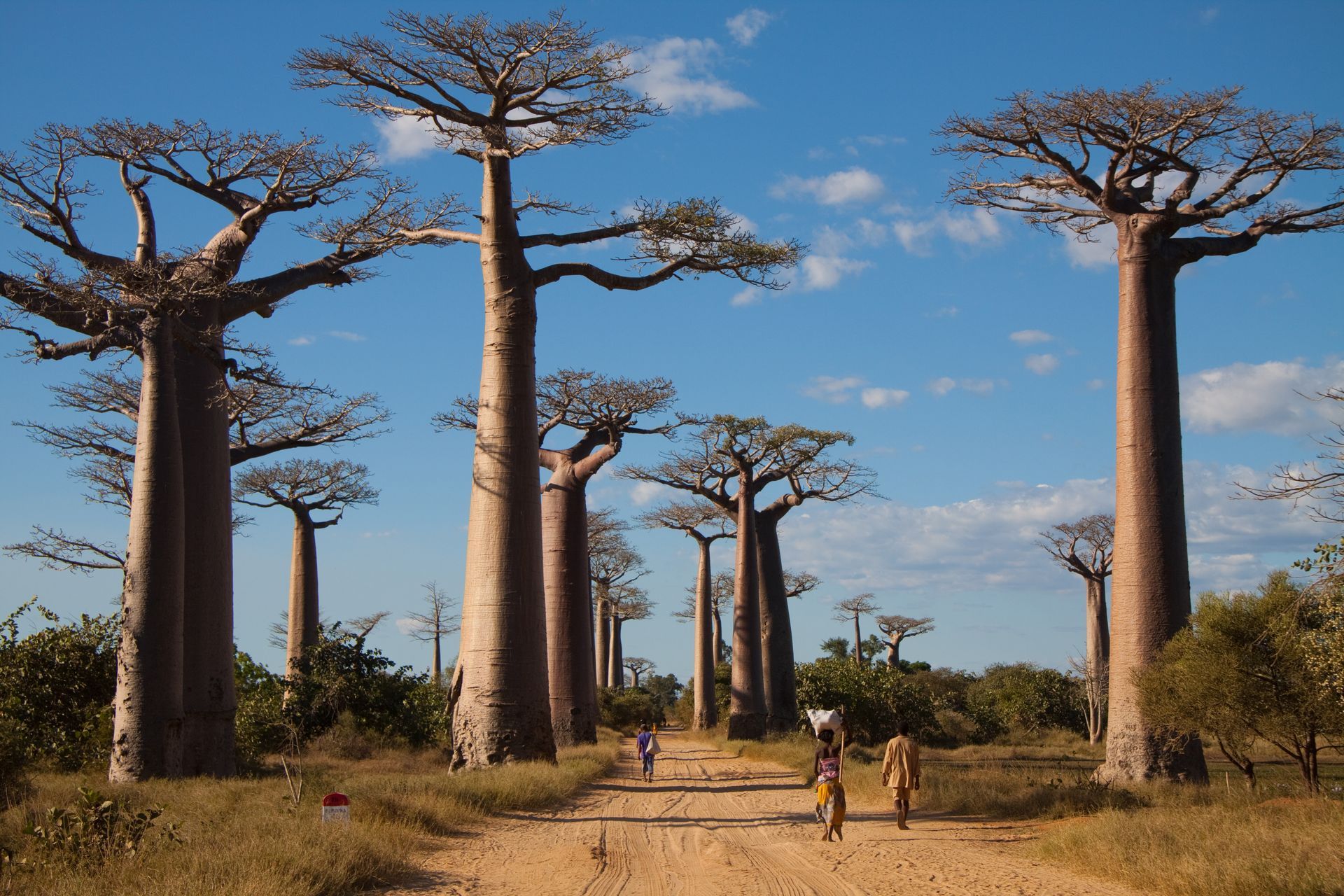
Slide title
Write your caption hereButton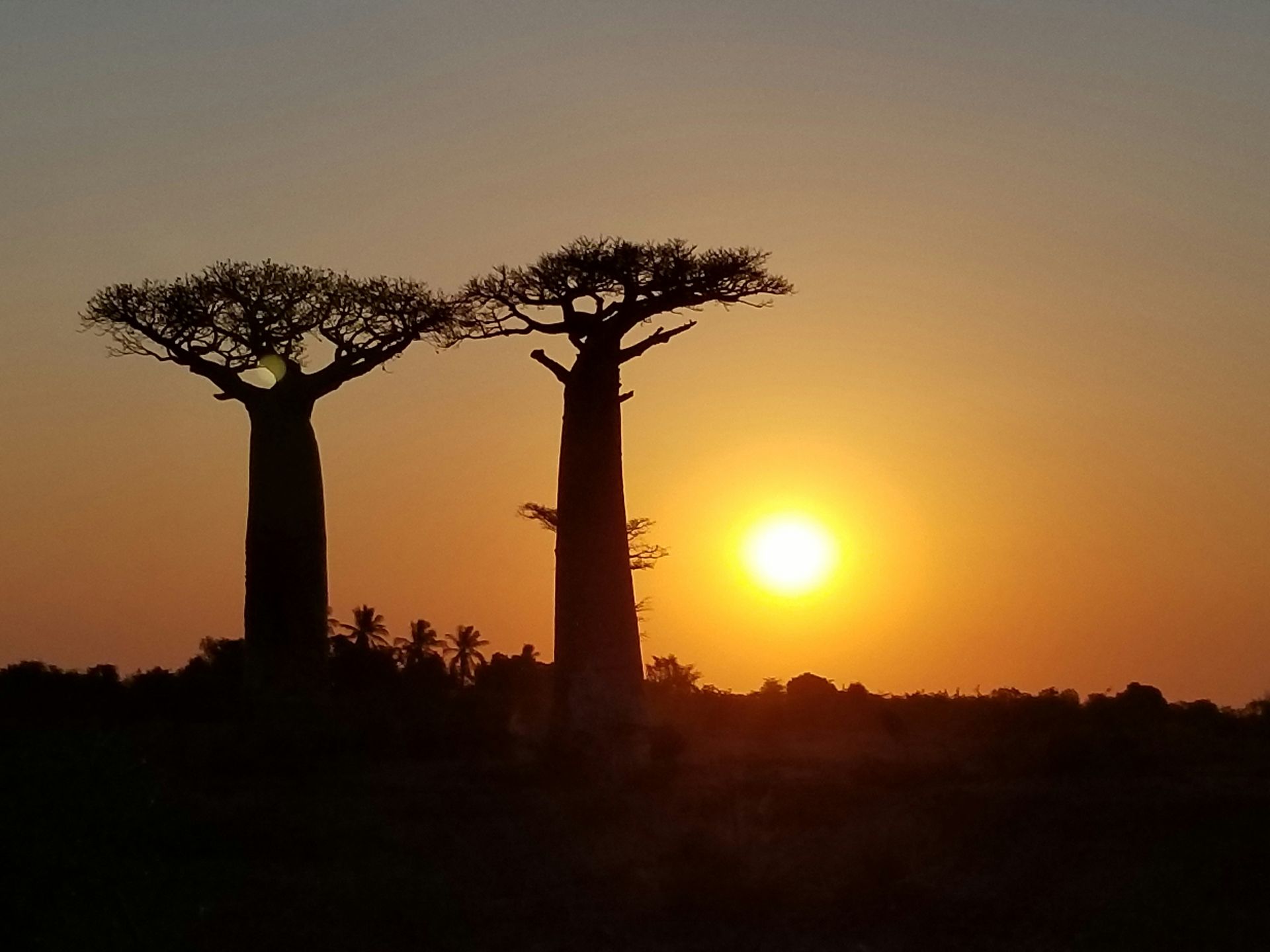
Slide title
Write your caption hereButton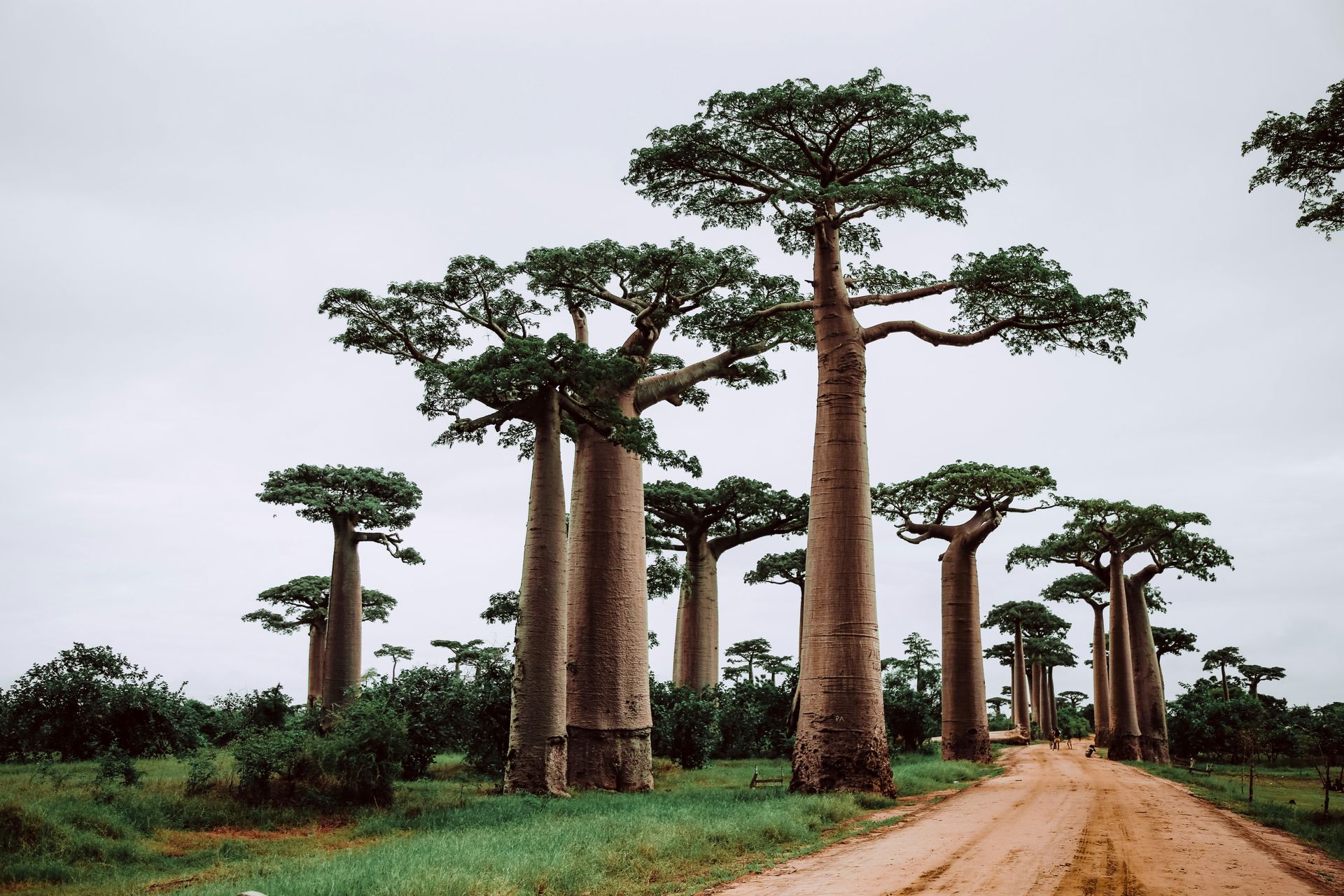
Slide title
Write your caption hereButton
AVENUE OF THE BAOBABS
An iconic natural wonder located on a dirt road between Morondava and Belon'i Tsiribihina in western Madagascar, the Avenue of the Baobabs features a dramatic line of Grandidier's baobabs (Adansonia grandidieri) lining either side. These majestic trees, with their distinctively swollen trunks, are a treasured symbol of Madagascar.
The avenue is particularly captivating at sunrise and sunset, when the golden light creates a magical silhouette of the baobab trees against the colourful sky. It's an image that's become synonymous with Madagascar and that really resonates with the incredible natural vibrancy of this magical island nation.
Visitors have the choice to stroll or bike along the avenue, marvelling at the ancient trees as they go. Some of the trees are estimated to be more than 800 years old. Local vendors often set up stalls selling souvenirs and refreshments nearby.
AVENUE OF THE BAOBABS
An iconic natural wonder located on a dirt road between Morondava and Belon'i Tsiribihina in western Madagascar, the Avenue of the Baobabs features a dramatic line of Grandidier's baobabs (Adansonia grandidieri) lining either side. These majestic trees, with their distinctively swollen trunks, are a treasured symbol of Madagascar.
The avenue is particularly captivating at sunrise and sunset, when the golden light creates a magical silhouette of the baobab trees against the colourful sky. It's an image that's become synonymous with Madagascar and that really resonates with the incredible natural vibrancy of this magical island nation.
Visitors have the choice to stroll or bike along the avenue, marvelling at the ancient trees as they go. Some of the trees are estimated to be more than 800 years old. Local vendors often set up stalls selling souvenirs and refreshments nearby.



CENTRAL HIGHLANDS
Madagascar's central highlands region is filled with some of the most breathtaking mountain scenery in Africa, from the towering peaks of Andringitra National Park to the Tsaranoro Valley and the distinctive Mount Tsaranoro. Add in verdant valleys transected by crystal-clear rivers and streams and far-flung farming communities and you have some of the most idyllic settings on the island.
The capital of this region is the picturesque and historic city of Fianarantsoa, with its beautiful Old Town well worth a visit for its traditional restaurants, shops, houses and phenomenal views.
Lush valleys are filled with rice paddies and smallholdings that grow amazing fresh produce which is sold at colourful markets in the numerous towns and villages that dot the landscape. This is the land of the zebu - Madagascar's traditional cattle breed, which can be seen both grazing in the paddies and pulling carts and wagons on the sometimes crazily winding roads.
Primary forests are secreted between the mountains and are home to a range of lemur species, most notably the ring-tailed lemur. Most of the forests are sacred to the local communities and contain ancient graves dating back hundreds of years.
Slide title
Write your caption hereButton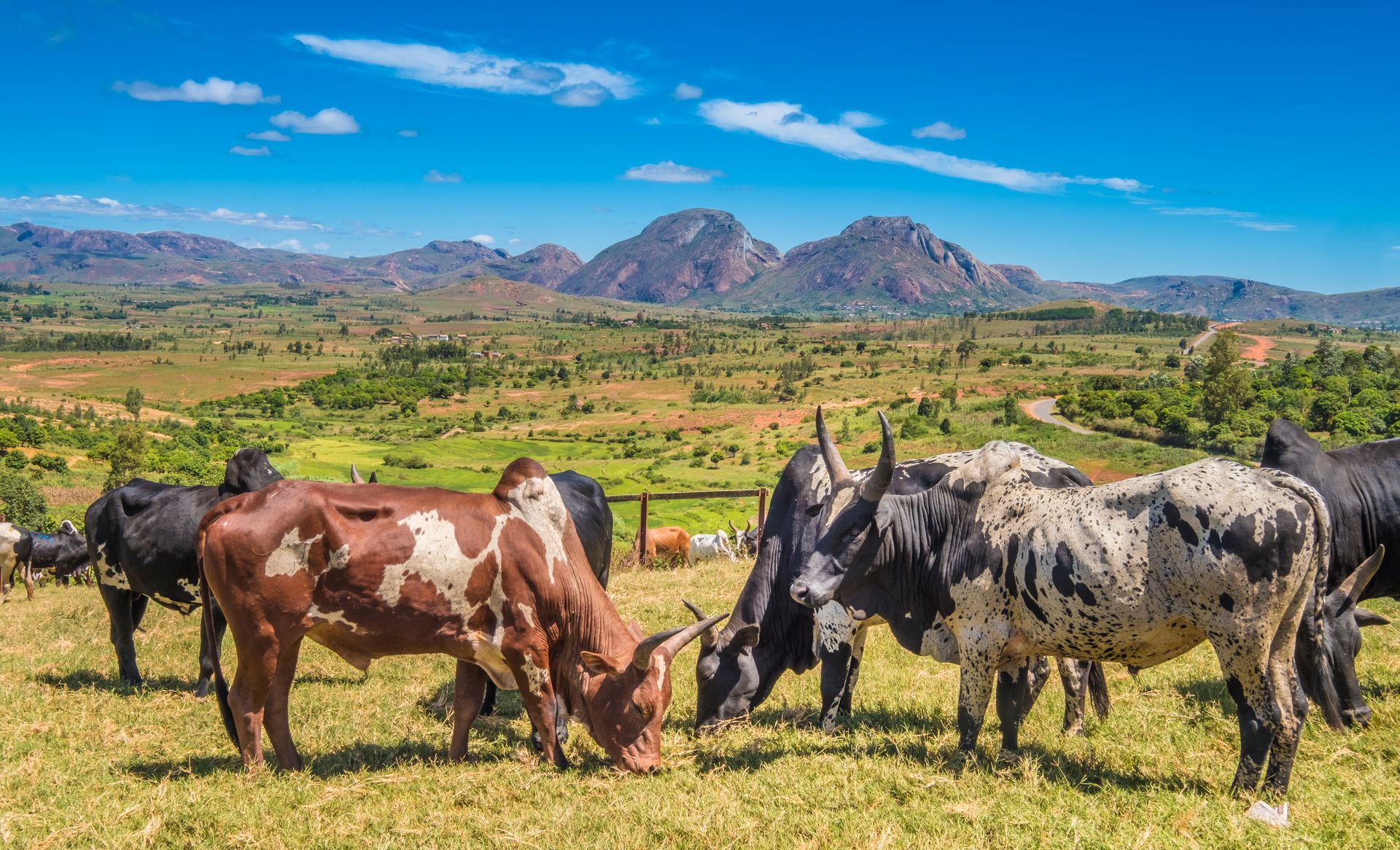
Slide title
Write your caption hereButton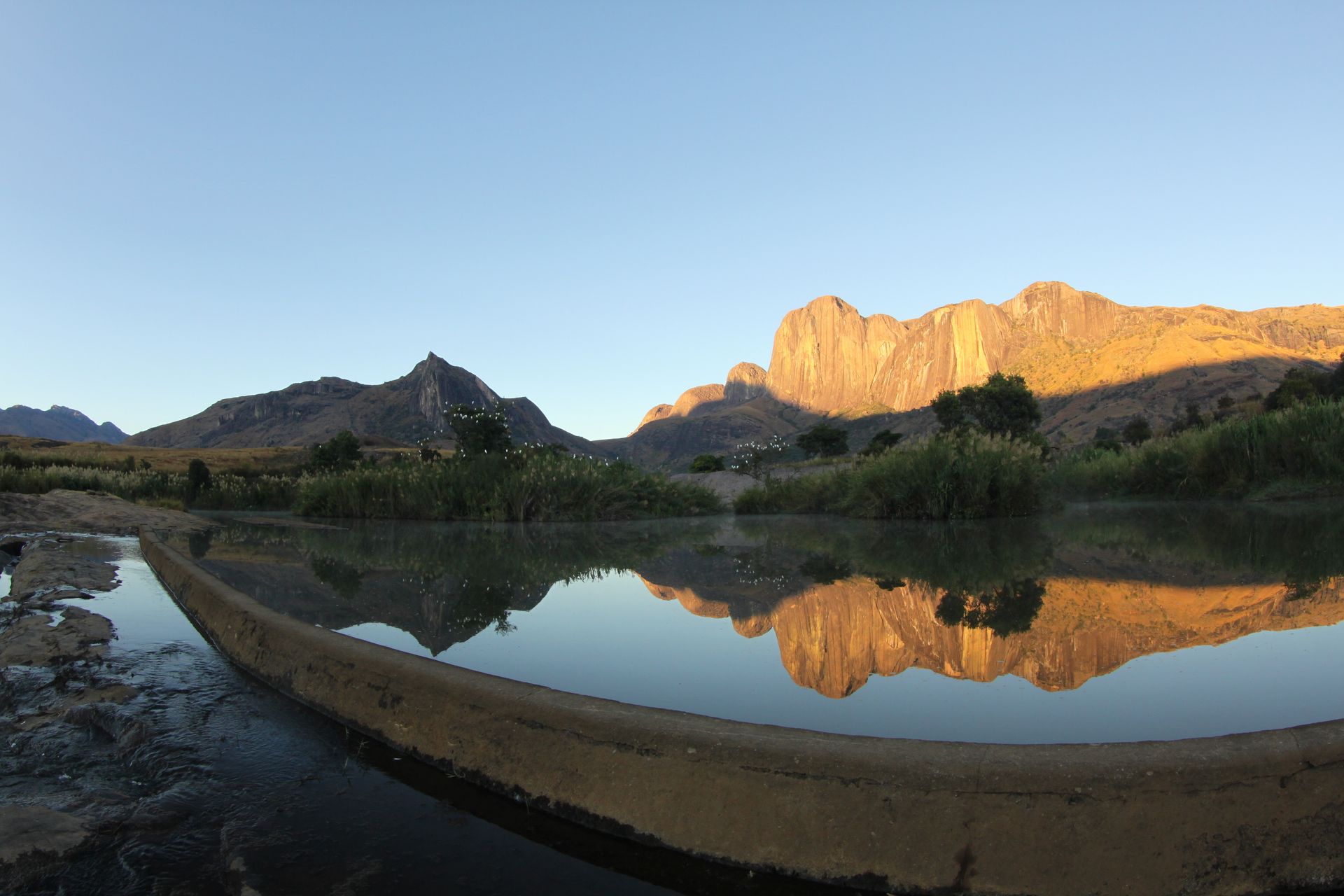
Slide title
Write your caption hereButton
CENTRAL HIGHLANDS
Madagascar's central highlands region is filled with some of the most breathtaking mountain scenery in Africa, from the towering peaks of Andringitra National Park to the Tsaranoro Valley and the distinctive Mount Tsaranoro. Add in verdant valleys transected by crystal-clear rivers and streams and far-flung farming communities and you have some of the most idyllic settings on the island.
The capital of this region is the picturesque and historic city of Fianarantsoa, with its beautiful Old Town well worth a visit for its traditional restaurants, shops, houses and phenomenal views.
Lush valleys are filled with rice paddies and smallholdings that grow amazing fresh produce which is sold at colourful markets in the numerous towns and villages that dot the landscape. This is the land of the zebu - Madagascar's traditional cattle breed, which can be seen both grazing in the paddies and pulling carts and wagons on the sometimes crazily winding roads.
Primary forests are secreted between the mountains and are home to a range of lemur species, most notably the ring-tailed lemur. Most of the forests are sacred to the local communities and contain ancient graves dating back hundreds of years.
CENTRAL HIGHLANDS
Madagascar's central highlands region is filled with some of the most breathtaking mountain scenery in Africa, from the towering peaks of Andringitra National Park to the Tsaranoro Valley and the distinctive Mount Tsaranoro. Add in verdant valleys transected by crystal-clear rivers and streams and far-flung farming communities and you have some of the most idyllic settings on the island.
The capital of this region is the picturesque and historic city of Fianarantsoa, with its beautiful Old Town well worth a visit for its traditional restaurants, shops, houses and phenomenal views.
Lush valleys are filled with rice paddies and smallholdings that grow amazing fresh produce which is sold at colourful markets in the numerous towns and villages that dot the landscape. This is the land of the zebu - Madagascar's traditional cattle breed, which can be seen both grazing in the paddies and pulling carts and wagons on the sometimes crazily winding roads.
Primary forests are secreted between the mountains and are home to a range of lemur species, most notably the ring-tailed lemur. Most of the forests are sacred to the local communities and contain ancient graves dating back hundreds of years.



ISALO NATIONAL PARK
Located in Madagascar's arid west and noted for its hot, dry climate, Isalo National Park is an impressive area dominated by dramatic coarse-grained sandstone rock formations caused by aeons of wind and water erosion.
This has created deep canyons, sandstone domes, flat-topped and “runiform” mountains - steep sided outcrops that have been dissected into odd-shapes. The result is one of the most distinctive and awe-inspiring national parks in Africa.
Six species of lemur can be found in Isalo - the ring-tailed, Verraux's sifaka, red-fronted, grey mouse, red-tailed sportive and Coquerel's giant mouse lemur. More than 100 species of birds have been recorded in Isalo, including Benson's rock thrush and the Madagascar ibis.
Isalo is also home to a veritable giant of the reptile world - the massive Oustalet's chameleon - one of the largest species of this odd-looking reptile on the planet, reaching a length of up to 69cm!
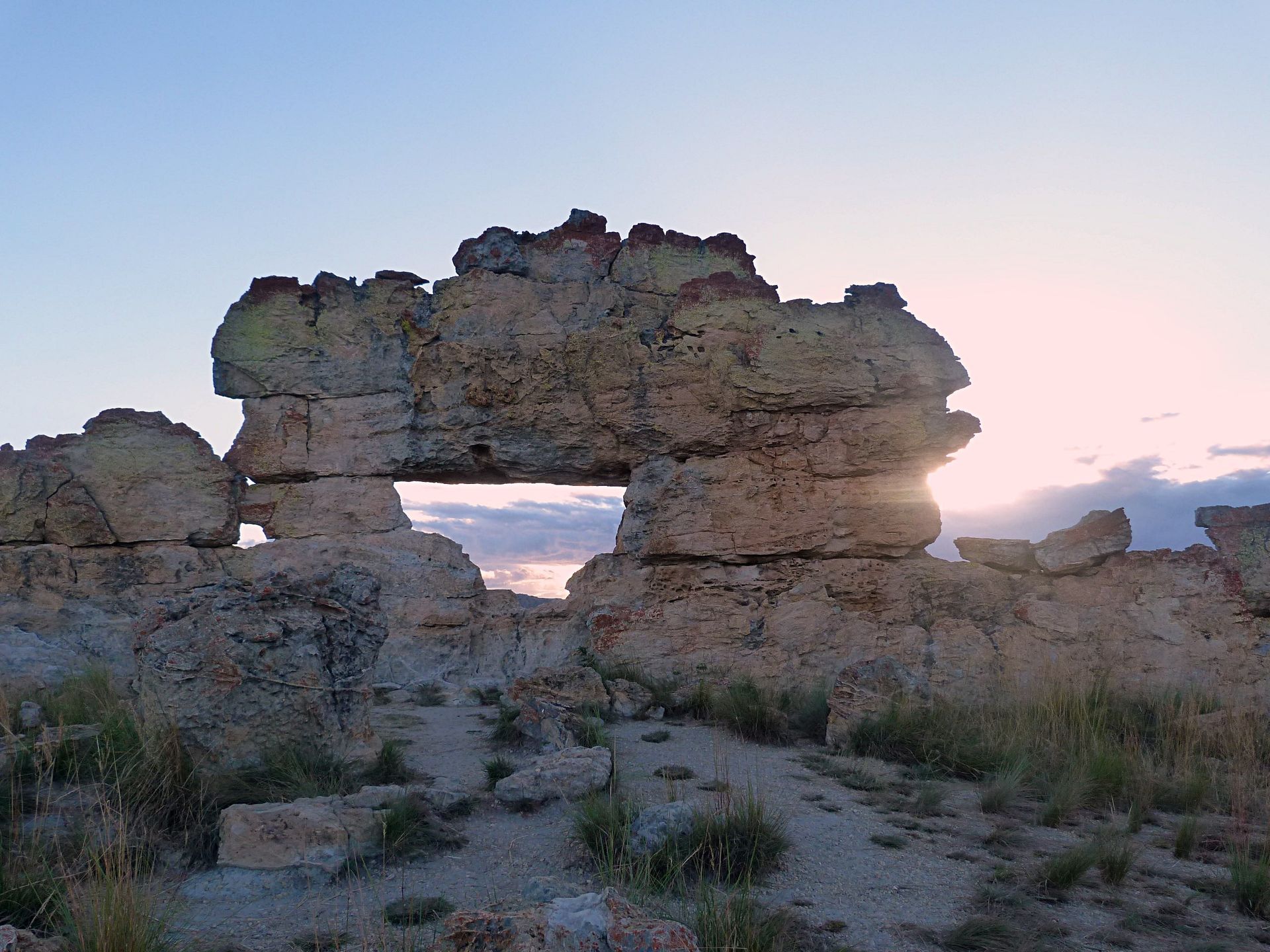
Slide title
Write your caption hereButton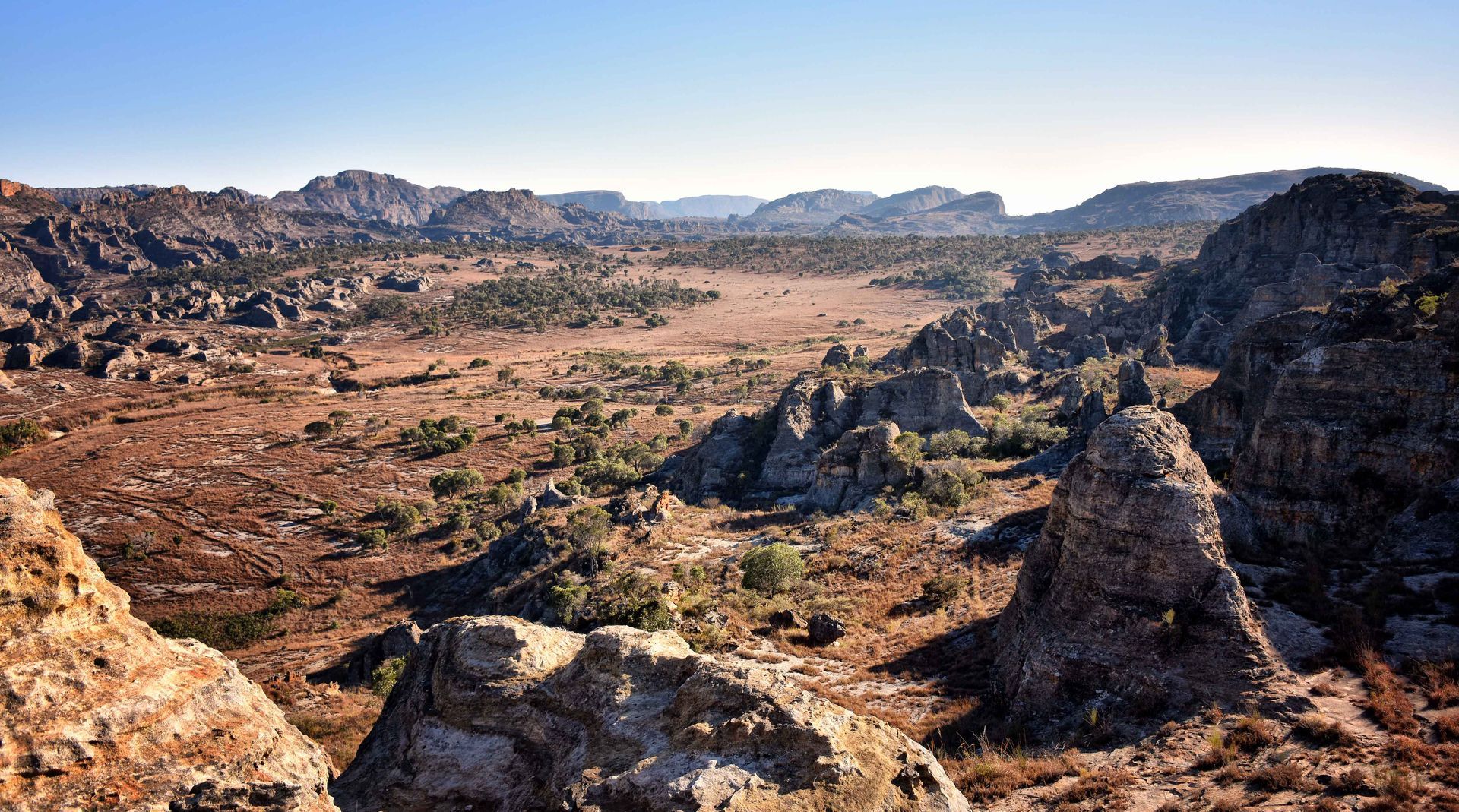
Slide title
Write your caption hereButtonSlide title
Write your caption hereButton
ISALO NATIONAL PARK
Located in Madagascar's arid west and noted for its hot, dry climate, Isalo National Park is an impressive area dominated by dramatic coarse-grained sandstone rock formations caused by aeons of wind and water erosion.
This has created deep canyons, sandstone domes, flat-topped and “runiform” mountains - steep sided outcrops that have been dissected into odd-shapes. The result is one of the most distinctive and awe-inspiring national parks in Africa.
Six species of lemur can be found in Isalo - the ring-tailed, Verraux's sifaka, red-fronted, grey mouse, red-tailed sportive and Coquerel's giant mouse lemur. More than 100 species of birds have been recorded in Isalo, including Benson's rock thrush and the Madagascar ibis.
Isalo is also home to a veritable giant of the reptile world - the massive Oustalet's chameleon - one of the largest species of this odd-looking reptile on the planet, reaching a length of up to 69cm!
ISALO NATIONAL PARK
Located in Madagascar's arid west and noted for its hot, dry climate, Isalo National Park is an impressive area dominated by dramatic coarse-grained sandstone rock formations caused by aeons of wind and water erosion.
This has created deep canyons, sandstone domes, flat-topped and “runiform” mountains - steep sided outcrops that have been dissected into odd-shapes. The result is one of the most distinctive and awe-inspiring national parks in Africa.
Six species of lemur can be found in Isalo - the ring-tailed, Verraux's sifaka, red-fronted, grey mouse, red-tailed sportive and Coquerel's giant mouse lemur. More than 100 species of birds have been recorded in Isalo, including Benson's rock thrush and the Madagascar ibis.
Isalo is also home to a veritable giant of the reptile world - the massive Oustalet's chameleon - one of the largest species of this odd-looking reptile on the planet, reaching a length of up to 69cm!



TSINGY DE BEMAHARA NATIONAL PARK
A UNESCO World Heritage Site famed for its otherworldly landscape of razor-sharp limestone pinnacles, Tsingy de Bemahara National Park is nicknamed the "Stone Forest" and is a labyrinth of tsingy (pronounced "ching-gee" and Malagasy for "where one cannot walk barefoot"). These dramatic rock formations were sculpted by millions of years of erosion, creating a visually stunning and geologically significant spectacle.
The park is divided into two sections: the Tsingy de Bemaraha Strict Nature Reserve and the Tsingy de Bemaraha National Park. Both offer visitors the chance to explore the tsingy through a network of guided trails and walkways, with options for hiking, spelunking, and even viewing the park from above by small plane.
Tsingy de Bemaraha National Park is also a haven for wildlife. Diverse birdlife soars among the tsingy, while lemurs, including the endangered Decken's sifaka, can be spotted amidst the spiny forests. The park is also home to several endemic plant species that have adapted to the harsh environment.
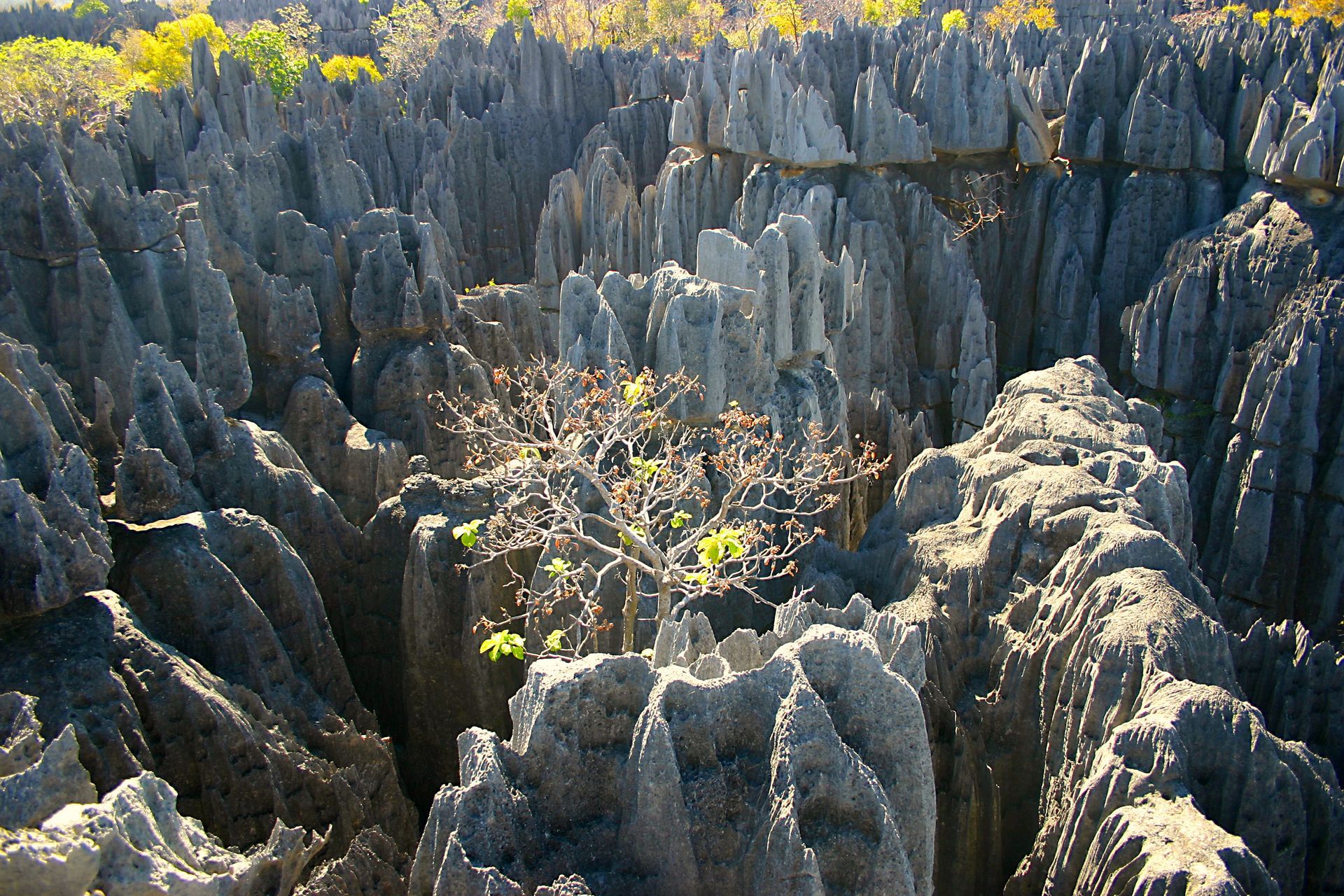
Slide title
Write your caption hereButton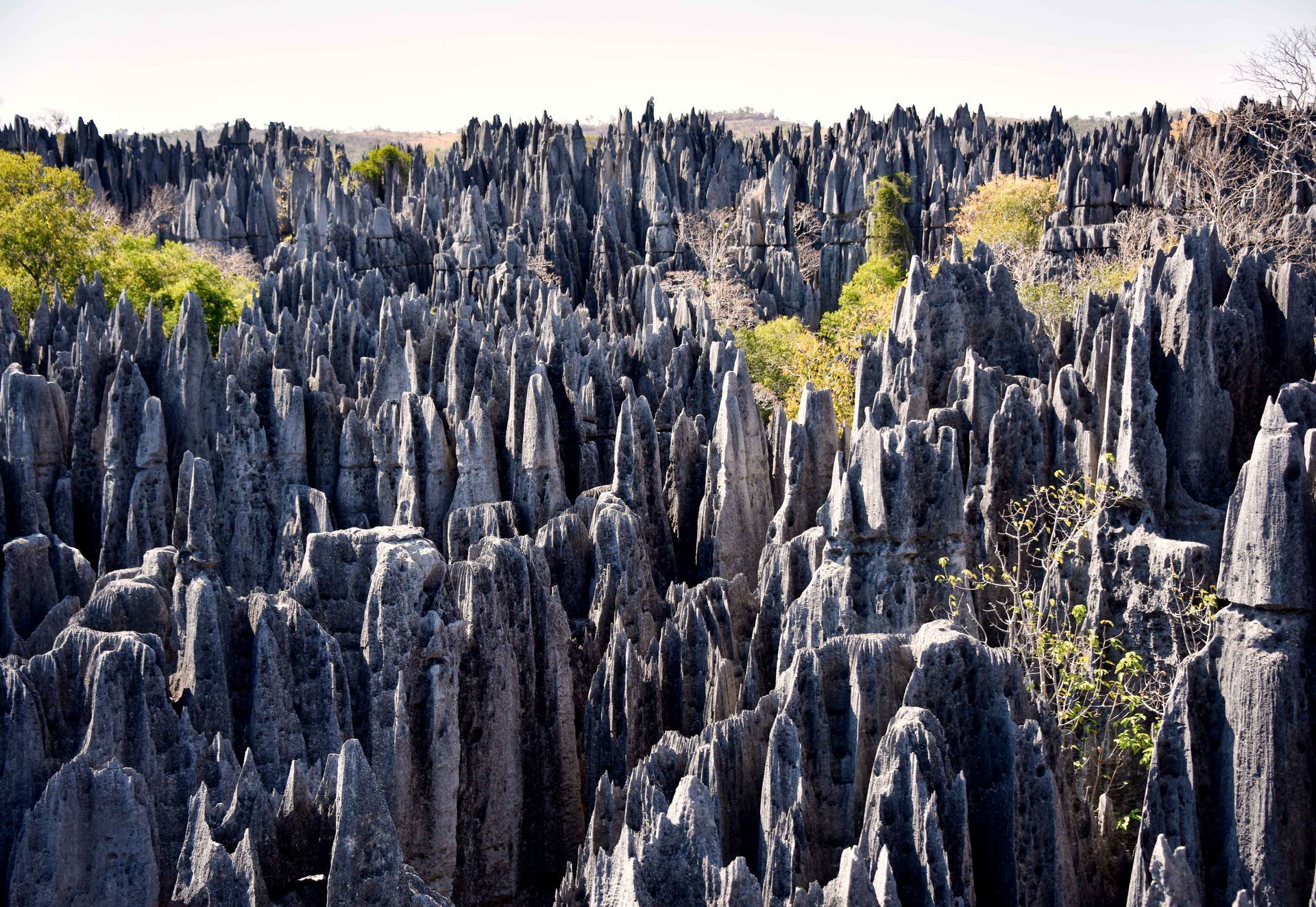
Slide title
Write your caption hereButton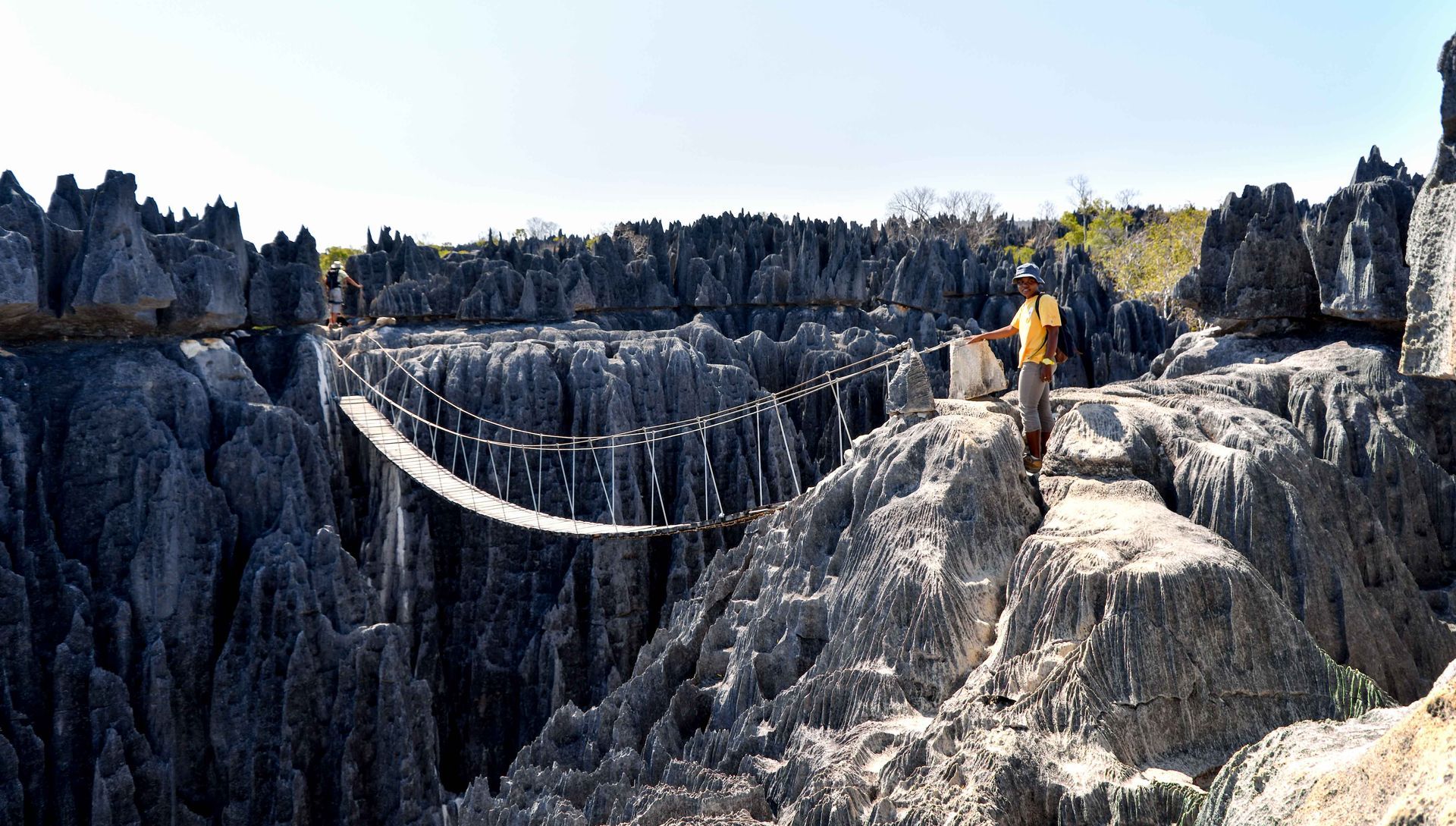
Slide title
Write your caption hereButton
TSINGY DE BEMAHARA NATIONAL PARK
A UNESCO World Heritage Site famed for its otherworldly landscape of razor-sharp limestone pinnacles, Tsingy de Bemahara National Park is nicknamed the "Stone Forest" and is a labyrinth of tsingy (pronounced "ching-gee" and Malagasy for "where one cannot walk barefoot"). These dramatic rock formations were sculpted by millions of years of erosion, creating a visually stunning and geologically significant spectacle.
The park is divided into two sections: the Tsingy de Bemaraha Strict Nature Reserve and the Tsingy de Bemaraha National Park. Both offer visitors the chance to explore the tsingy through a network of guided trails and walkways, with options for hiking, spelunking, and even viewing the park from above by small plane.
Tsingy de Bemaraha National Park is also a haven for wildlife. Diverse birdlife soars among the tsingy, while lemurs, including the endangered Decken's sifaka, can be spotted amidst the spiny forests. The park is also home to several endemic plant species that have adapted to the harsh environment.
TSINGY DE BEMAHARA NATIONAL PARK
A UNESCO World Heritage Site famed for its otherworldly landscape of razor-sharp limestone pinnacles, Tsingy de Bemahara National Park is nicknamed the "Stone Forest" and is a labyrinth of tsingy (pronounced "ching-gee" and Malagasy for "where one cannot walk barefoot"). These dramatic rock formations were sculpted by millions of years of erosion, creating a visually stunning and geologically significant spectacle.
The park is divided into two sections: the Tsingy de Bemaraha Strict Nature Reserve and the Tsingy de Bemaraha National Park. Both offer visitors the chance to explore the tsingy through a network of guided trails and walkways, with options for hiking, spelunking, and even viewing the park from above by small plane.
Tsingy de Bemaraha National Park is also a haven for wildlife. Diverse birdlife soars among the tsingy, while lemurs, including the endangered Decken's sifaka, can be spotted amidst the spiny forests. The park is also home to several endemic plant species that have adapted to the harsh environment.



NOSY BE AND OTHER BEACHES
Madagascar's beautiful coastline offers some of the most idyllic beach destinations in Africa, with soft white sand beaches and the warm waters of the Indian Ocean making them the perfect complement to an exploration of the rest of the island.
The northern coast is home to the Nosy Be archipelago - a collection of picture-perfect islets that are renowned for their laid-back, relaxed style and tropical paradise status! You'll find wonderful beach resorts, villas, cottages, lodges and cabins here, affording you the chance to indulge in some island-hopping.
From a wildlife point of view, Madagascar's beaches are frequented by turtles who use the soft white sand to lay their eggs in. Lemurs and a range of other mammal species, as well as amazing chameleons and abundant birdlife can be found in the tropical coastal forests.
The island is also fringed by pristine coral reefs. This makes diving and snorkelling absolute musts during your stay. True diving fanatics will enjoy a trip to the Nosy Tanikely Marine Park, which is world-renowned for its exceptional biodiversity and exotic aquatic species. Adventure activities also abound, from dhow cruises to windsurfing excursions and jet ski rides.

Slide title
Write your caption hereButton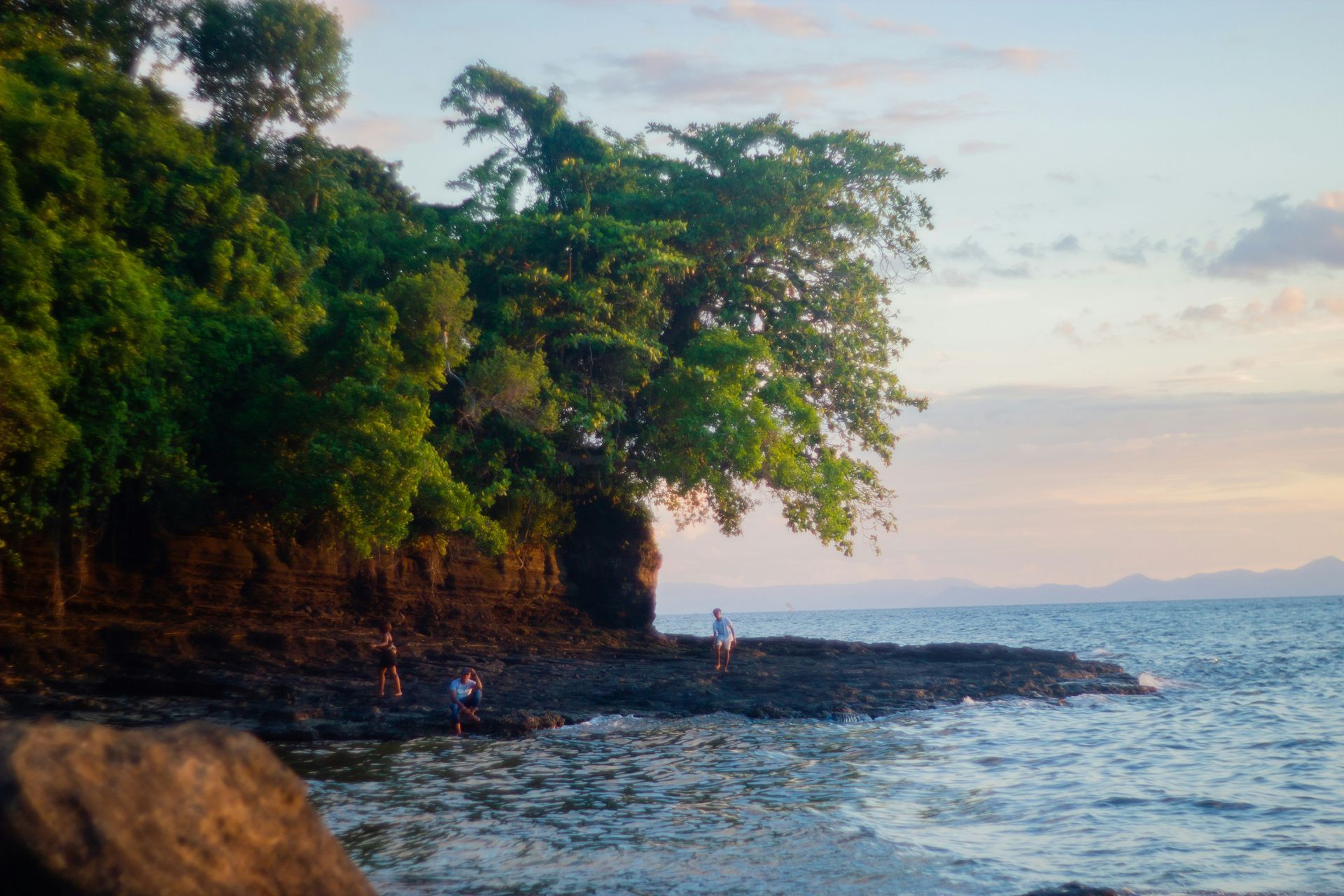
Slide title
Write your caption hereButton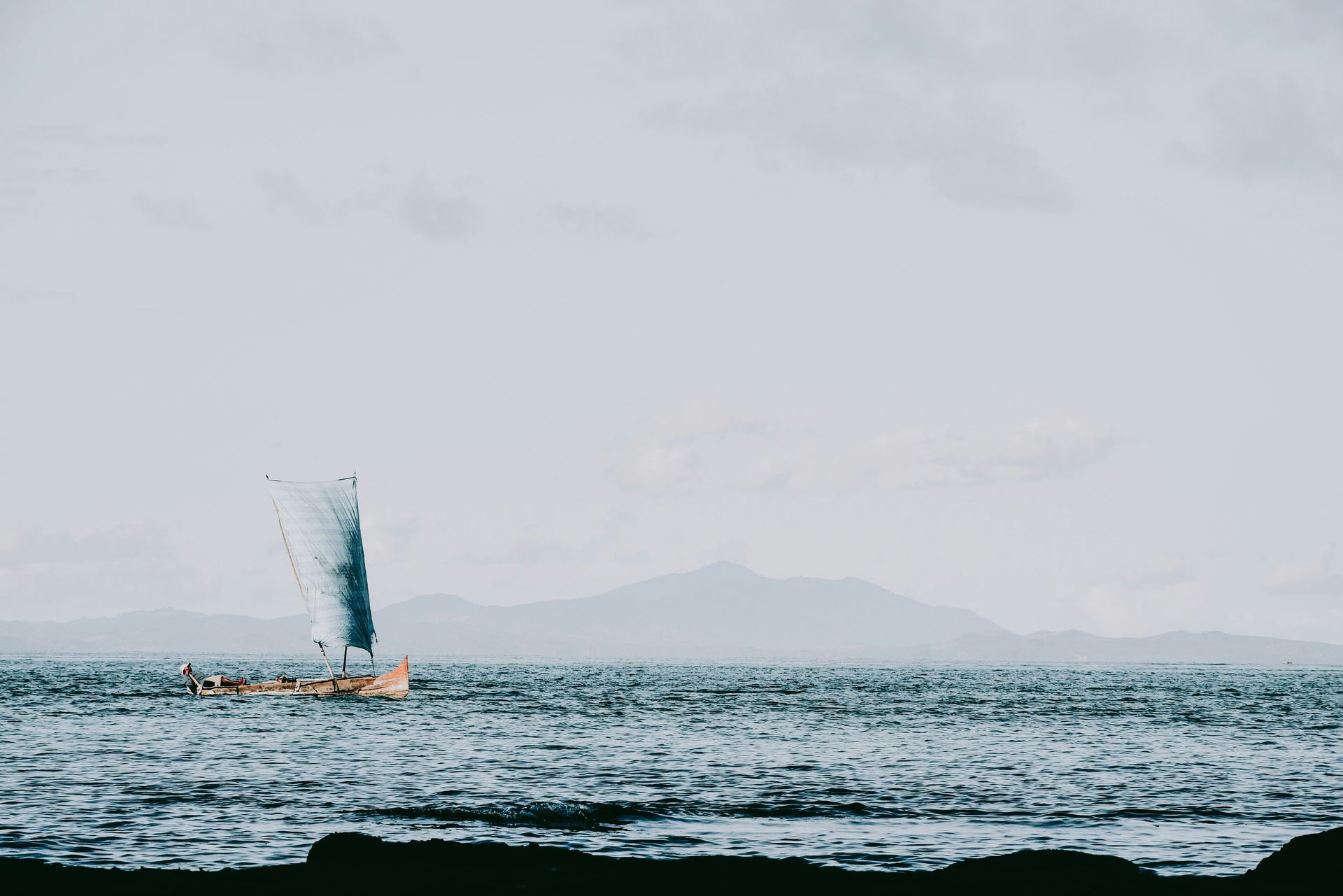
Slide title
Write your caption hereButton
NOSY BE AND OTHER BEACHES
Madagascar's beautiful coastline offers some of the most idyllic beach destinations in Africa, with soft white sand beaches and the warm waters of the Indian Ocean making them the perfect complement to an exploration of the rest of the island.
The northern coast is home to the Nosy Be archipelago - a collection of picture-perfect islets that are renowned for their laid-back, relaxed style and tropical paradise status! You'll find wonderful beach resorts, villas, cottages, lodges and cabins here, affording you the chance to indulge in some island-hopping.
From a wildlife point of view, Madagascar's beaches are frequented by turtles who use the soft white sand to lay their eggs in. Lemurs and a range of other mammal species, as well as amazing chameleons and abundant birdlife can be found in the tropical coastal forests.
The island is also fringed by pristine coral reefs. This makes diving and snorkelling absolute musts during your stay. True diving fanatics will enjoy a trip to the Nosy Tanikely Marine Park, which is world-renowned for its exceptional biodiversity and exotic aquatic species. Adventure activities also abound, from dhow cruises to windsurfing excursions and jet ski rides.
NOSY BE AND OTHER BEACHES
Madagascar's beautiful coastline offers some of the most idyllic beach destinations in Africa, with soft white sand beaches and the warm waters of the Indian Ocean making them the perfect complement to an exploration of the rest of the island.
The northern coast is home to the Nosy Be archipelago - a collection of picture-perfect islets that are renowned for their laid-back, relaxed style and tropical paradise status! You'll find wonderful beach resorts, villas, cottages, lodges and cabins here, affording you the chance to indulge in some island-hopping.
From a wildlife point of view, Madagascar's beaches are frequented by turtles who use the soft white sand to lay their eggs in. Lemurs and a range of other mammal species, as well as amazing chameleons and abundant birdlife can be found in the tropical coastal forests.
The island is also fringed by pristine coral reefs. This makes diving and snorkelling absolute musts during your stay. True diving fanatics will enjoy a trip to the Nosy Tanikely Marine Park, which is world-renowned for its exceptional biodiversity and exotic aquatic species. Adventure activities also abound, from dhow cruises to windsurfing excursions and jet ski rides.



Want to go to Madagascar?
Explore with Claire's stories
Want to go to Madagascar?
Explore with Claire's stories
Want to go to Madagascar?
Explore with Claire's stories



Phone: +27 82 598 3168
Email: info@hasslefreeafrica.com
124 Gladiolus Ave
Brenton on Sea
Knysna
6571
Sunny South Africa's gorgeous Garden Route
Designed & powered by: The Safari Collective
All Rights Reserved | Hassle Free Africa
Designed & powered by: The Safari Collective
All Rights Reserved | Hassle Free Africa

